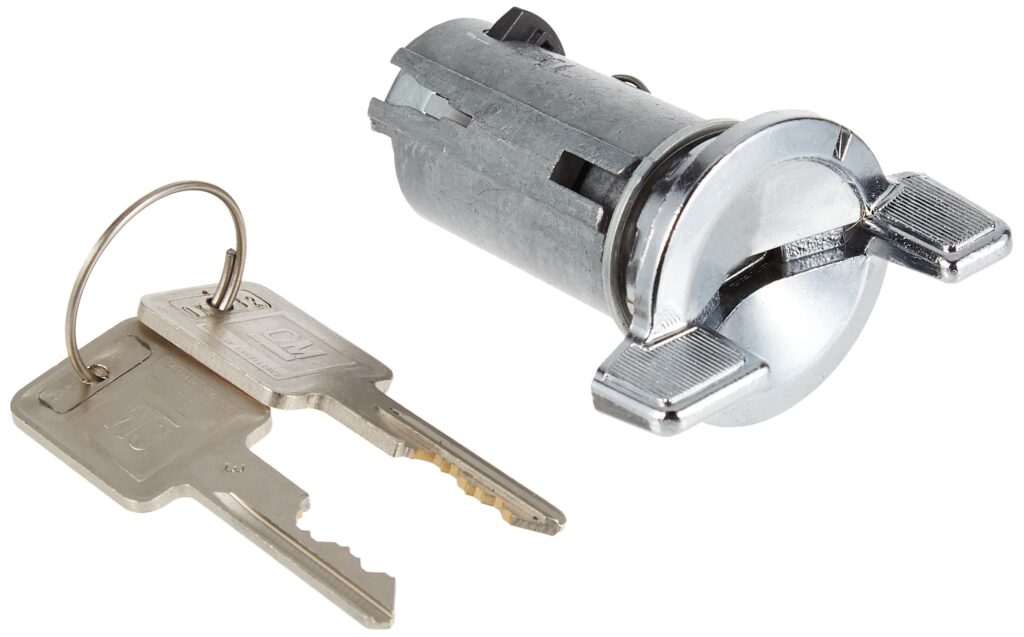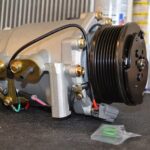
Toyota RAV4 Key Won’t Turn: The Definitive Guide to Diagnosis, Fixes & Prevention

We present a thorough, step-by-step guide to resolving the common—and frustrating—issue when your Toyota RAV4 key refuses to turn. Below you’ll find detailed diagnostic paths, effective fixes, and long-term preventative strategies to ensure you avoid recurring ignition trouble.
1. Symptoms You’ll Recognize Immediately
When a RAV4’s key won’t turn, one or more of the following are typically observed:
- Key inserts but refuses to rotate in the ignition.
- Steering wheel feels locked, won’t budge.
- Gear shifter cannot be moved to Park/Neutral, or is stuck.
- Electrical accessories (radio, lights) may or may not work.
- Ignition switch shows no response (no “ACC,” no starter click).
- The issue is intermittent: the key works sometimes but not always.
2. Core Underlying Causes
To address the issue decisively, one must understand the principal failure points.
2.1 Steering Column / Lock Binding
If the wheels are turned as the car is switched off, tension is placed on the steering column, which can activate the steering lock mechanism and bind the ignition cylinder. A slight turn of the steering wheel (left–right) while trying the key can relieve this binding.
Many drivers report success doing just that: wiggle the wheel while applying gentle key torque.
2.2 Worn, Bent or Damaged Key
Over time, your key’s edges may degrade or bend. A worn key may no longer engage the lock tumblers correctly.
Cheap duplications often contribute to key distortion and failure.
2.3 Faulty Ignition Lock Cylinder / Switch
The lock cylinder is a mechanical assembly of plates, tumblers, levers, and springs. If a plate is broken or a lever fails to depress, the key will not rotate.
Similarly, the ignition switch itself may wear or have internal fault, especially in vehicles used heavily.
2.4 Transmission / Gear Interlock Issues
For automatics, the vehicle must be in “Park” to allow the key to turn or remove. If the shift interlock is misaligned or faulty, the key may be physically prevented from turning or releasing.
2.5 Electrical / Battery & Immobilizer Problems
Although less common, insufficient battery voltage can prevent safety mechanisms from disengaging properly, causing key-turn problems.
Also, the car’s immobilizer or chip recognition circuit might fail, blocking ignition.
 How to Unlock a Toyota RAV4 Steering Wheel: Step-by-Step Fix Guide
How to Unlock a Toyota RAV4 Steering Wheel: Step-by-Step Fix Guide2.6 Foreign Debris, Rust, and Internal Obstructions
Dust, rust, or small debris inside the lock cylinder may prevent pins from aligning. Over years, internal corrosion can bind the mechanism irreversibly.
3. Diagnostic Workflow: Isolating the Problem
We recommend the following structured sequence, progressing from easiest to most involved:
| Step | Action | Purpose / What to Observe |
|---|---|---|
| 1 | Try turning the steering wheel while gently applying torque to key | If it turns, steering lock was binding |
| 2 | Use a known-good spare key | Is the issue with original key? |
| 3 | Confirm vehicle is in Park (or Neutral for manuals) | Prevent transmission interlock being culprit |
| 4 | Check battery voltage or jump-start | Rule out low-voltage electrical lockout |
| 5 | Spray graphite or specialized lock lubricant | Loosen internal binding in cylinder |
| 6 | Tap or lightly jostle the key while attempting turn | May free stuck pins |
| 7 | Remove panels and inspect ignition lock components | Look for broken plates, stuck lever, rust |
| 8 | Assess interlock solenoids or wiring (for advanced users) | Check electrical or sensor interlocks |
If a step produces success, you can stop further disassembly.
4. Step-by-Step Repair & Workarounds
4.1 Releasing a Locked Steering Column
- Insert the key into the ignition (don’t force it).
- Using one hand, turn the steering wheel gently left; with the other, try the key.
- If no response, try the opposite direction.
- Alternate back and forth while moderately turning the key.
This approach relieves pressure on the lock pin and frees the cylinder.
Drivers often recover key rotation within seconds.
4.2 Testing with a Spare or Secondary Key
If you have a factory spare, try it. A worn or subtly bent original key may fail while the secondary works.
If the spare works, the fix is to recut a proper key rather than forcing repairs on the ignition.
4.3 Lubrication, Cleaning & Mechanical Release
- Use dry graphite spray or a lock-specific lubricant. Avoid oil-based sprays that attract dust.
- Apply a small amount into the key slot, insert the key, and rotate back and forth gently.
- Light tapping at the end of the key shaft can help dislodge stuck tumblers.
These steps can free internal sticking or corrosion.
4.4 Replacing the Ignition Lock Cylinder or Switch
If internal damage is confirmed:
- Remove the steering column lower covers.
- Rotate the lock cylinder to the “ACC” position.
- Press the release pin or tab (usually accessible via a small hole).
- Pull the cylinder out.
- Replace with a correctly matched OEM cylinder.
- Reassemble and test.
If the ignition switch (electrical portion) is defective, it may require replacement or repair. This often involves removing instrument cluster or dash panels, so professional help is advisable for modern RAV4s.
You may be interested in reading How to Unlock a Toyota RAV4 Steering Wheel: Step-by-Step Fix Guide
How to Unlock a Toyota RAV4 Steering Wheel: Step-by-Step Fix Guide Toyota RAV4 Screen Not Working — Complete Troubleshooting & Fix Guide (2025)
Toyota RAV4 Screen Not Working — Complete Troubleshooting & Fix Guide (2025)4.5 Addressing Transmission Interlocks
- Verify the shifter is fully in Park and the shift lock solenoid is functioning.
- If not, inspect wiring and the interlock actuator.
- Realign the interlock mechanism if it's offset.
An misaligned interlock will physically prevent key rotation.
4.6 Handling Electrical / Immobilizer Causes
- Check battery voltage with a multimeter. If below ~12.2 V, recharge or jump-start.
- Replace key fob battery if relevant (for smart keys or chip-based systems).
- Use a diagnostic scanner to check immobilizer or ECU error codes.
- In rare cases, reprogram the ECU or immobilizer to accept the key again.
If all mechanical causes are ruled out and the key still fails, the issue likely lies in the vehicle’s electronics.
5. When to Consult a Professional / Dealer
- If disassembly reveals broken internal plates or levers (beyond clean repair).
- If the ignition switch (electrical side) is suspect.
- If the immobilizer/ECU must be reprogrammed or reset.
- For best results in modern keyless or push-start systems.
- When you lack the proper tools or experience to safely disassemble steering column components.
A qualified locksmith or Toyota dealer can diagnose quickly and often restore full functionality without damage.
6. Preventive Maintenance Best Practices
- Avoid turning the steering wheel after removing the key; always return wheels to a neutral position before exiting.
- Lubricate the lock cylinder annually with dry graphite or lock-specific spray.
- Use only high-quality, factory-style keys when duplicating.
- Keep the key free from bending or damage.
- Replace a key that shows signs of wear before it worsens.
- For vehicles with push-start systems, maintain battery health and ensure correct fob distance
8. FAQ — Quick Answers to Common Questions
Q: Can a worn-out key cause the ignition not to turn?
Yes. If the key's mating surfaces no longer match the lock tumblers precisely, it won’t rotate properly. Use a spare key if available.
Q: Does a locked steering wheel prevent key rotation?
Absolutely. If the steering column is under tension when parked, the keyed ignition may bind. Wiggle the wheel while turning the key.
Q: Could a dead battery prevent the key from turning?
Yes in some cases — electronic lock mechanisms may not disengage when voltage is extremely low.
Q: When should I replace the ignition switch or lock cylinder?
If the mechanical assembly is damaged, or internal plates/levers are broken and cleaning or lubrication do not restore function.
Q: My key works sometimes, then fails later. What does this indicate?
Often this is early-stage internal wear, intermittent binding, or an electrical fault in an immobilizer component.
 How to Unlock a Toyota RAV4 Steering Wheel: Step-by-Step Fix Guide
How to Unlock a Toyota RAV4 Steering Wheel: Step-by-Step Fix Guide Toyota RAV4 Screen Not Working — Complete Troubleshooting & Fix Guide (2025)
Toyota RAV4 Screen Not Working — Complete Troubleshooting & Fix Guide (2025) Toyota RAV4 AC Not Working: Definitive Troubleshooting & Repair Guide (All Model Years)
Toyota RAV4 AC Not Working: Definitive Troubleshooting & Repair Guide (All Model Years)If you want to know other articles similar to Toyota RAV4 Key Won’t Turn: The Definitive Guide to Diagnosis, Fixes & Prevention you can visit the category Common Problems.
Deja una respuesta






More content of your interest